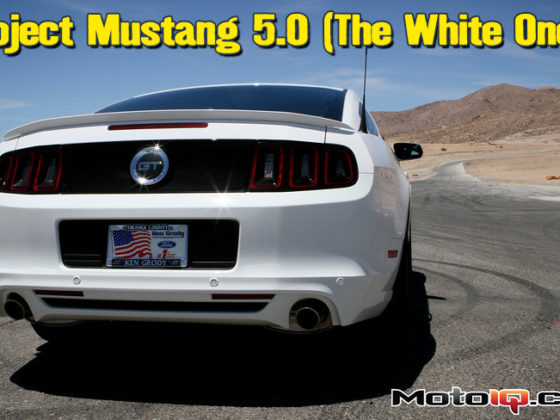
Our Mazda MPV minivan vs a Dodge Ram 1500 on all-seasons…who wins?
Michelin X-Ice Xi3 Snow Tires: Just How Good are They?
“I do fine in the snow because I have all-wheel drive!”
(Uh huh…)
I hear this every winter here in Kansas City. The problem with this comment is the individual is usually only considering acceleration. Sure, an AWD car will almost always have better acceleration in the snow than a RWD or FWD car, and the FWD car will be easier to handle in this situation due to its tendency to power-understeer. However, the number of drive-tires has little to do with braking performance. And let’s consider how most people get into accidents in the snow—is it when they have a hard time accelerating or slowing down? That answer is the latter, and the difference is all in the tires.
In the U.S. we don’t get penalized for driving a vehicle without snow tires during the winter months, even if we cause a wreck. In most of the Northern European countries, stretching as far down as Germany and Austria, however, you get fined a hefty amount of money if you’re caught without snow tires between the months of December and March. Even worse, causing a wreck that leads to a traffic jam equipped with the wrong tires could not only get you fined in the thousands—your insurance may not cover you!
In North America (except in Quebec, Canada, which passed a snow tire law in 2008), we don’t worry about this. Having grown up most of my life in Southern California, I recall the “chains-only” sections when driving up a snowy mountain, but if it snows elsewhere—like in Kansas City, where I live now with snow on the ground, even as I type—we are, by law, okay without snow tires. But they are badly needed.
I was first exposed to winter tires at a test by a big tire manufacturer in 2006, in Mont Tremblant, Canada. I could not believe how good true winter tires performed. Here we were in large BMW and Mercedes SUVs, trying not to slip on the ice when exiting our cars, and yet we were performing emergency lane change maneuvers on the same surface. It was an eye-opening experience and a perfectly timed event, having just moved to the Midwest a month prior. I was instantly sold on snow tires.

Anticipating our first snow storm in KC, which happened a few weeks ago, I ordered a set of Michelin X-Ice Xi3 snow tires for the wife’s daily family hauler, a 2004 Mazda MPV minivan.

The Michelin X-Ice Xi3 is a snow-rated winter tire, which replaces the previously acclaimed X-Ice Xi2, with a reported 17% stronger grip and 7% shorter stopping distances than its predecessor on ice; and 6% better traction and 3% shorter stops in the snow.
The Xi3's fall under the “Studless snow and tire” category. Michelin also offers “performance winter and snow” tires, like the Alpin PA4, for high performance cars requiring larger wheel diameter tire fitments.
Instead of mounting the Xi3’s and simply telling you subjectively how good they are (that would be a boring article to write), I enlisted the help of a couple of friends and their big, hefty snow-treading trucks for a comparison. First, let’s find out the difference between the minivan and the 2-wheel drive truck.
 My neighbor Chad has a Dodge Ram 1500 with a Hemi V8. Chad’s from this area and relies on his truck to get him about year-round, and claims to get along fine in the snow as long as he's careful.
My neighbor Chad has a Dodge Ram 1500 with a Hemi V8. Chad’s from this area and relies on his truck to get him about year-round, and claims to get along fine in the snow as long as he's careful.

